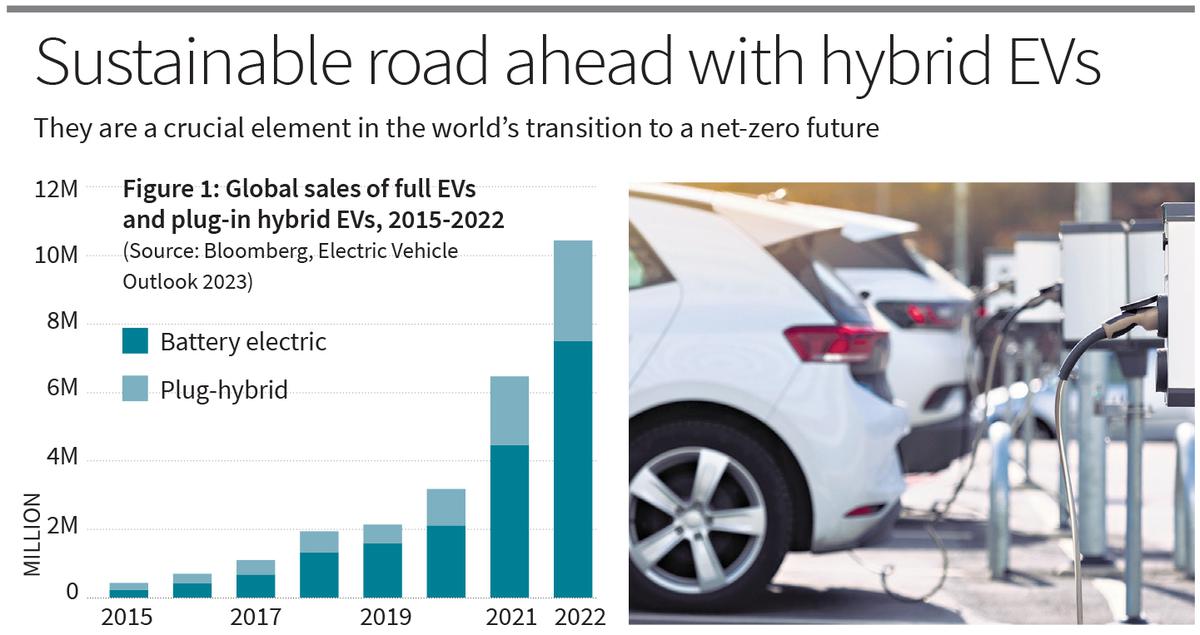
TEXT & CONTEXT: THE HYBRID EV IMPERATIVE
Current Affairs for 01st August, 2023
TEXT & CONTEXT: THE HYBRID EV IMPERATIVE
Hybrid electric vehicles is a crucial element in the world's transition to a net-zero future.
Net-zero - for a vehicle includes emissions at both the tailpipe of the vehicle and at the power plant. Making vehicles net-zero requires cutting emissions from both new and existing vehicles. Any vehicle propelled by an electric drivetrain, taking electric power from a portable, electrical energy source is called an EV.
•In a hybrid EV, an internal combustion engine (ICE) is used to produce electricity with an electrical generator. A small battery is typically used as an energy buffer to store the electricity since it cannot be charged from the grid.
• a full EV/ battery EV/plug-in EV– has no ICE and hence no tailpipe emissions. The battery is large and can only be charged from the grid.
• a plug-in hybrid is till a hybrid EV with a much larger battery which can also be charged from the grid.
• a fuel-cell EV uses a fuel cell to produce electricity for the drivetrain together with a small battery buffer to manage variations.
By combining the benefits of ICE with electric drivetrains, these vehicles offer an effective short-term solution to lower emissions and fuel costs while paving the way for a more sustainable future.
These vehicles offer a more realistic approach for nations facing grid limitations and challenges in building fast-charging infrastructure.
